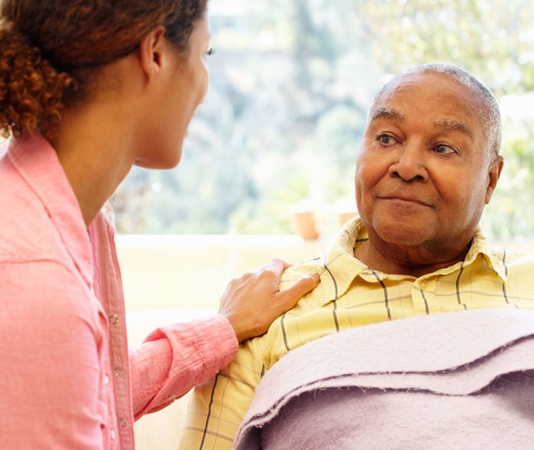Since posting an article about how to recognize a stroke on Facebook, we’ve had dozens of people weigh in with their stroke experiences. Not only are we grateful that our readers took the time to comment and share astounding true stories along with insights, we want to make sure even more people get to read them.
KR wrote: “I had terrible headaches for ten days before my stroke. I went to two different doctors who couldn’t figure out why; I don’t blame them since lots of things cause headaches. Five days before my stroke I had this weird symptom where half my face was bright red and the other half was white, with a line down the middle of my forehead. That night I dreamed that I was driving over a bridge and the pavement was crumbling away beneath me, exposing holds in the bridge. I woke up and wrote in my diary, “I think this is about the headaches and neck pain. I think the doctors are missing something serious.” Turns out I had a dissection in my carotid artery.”
In fact, KR had her stroke at work. “When I couldn’t talk, my boss said, “You’re having a stroke! I’m calling 911 and I’m riding in the ambulance with you.” She did, and I got prompt treatment. Her quick action may have saved my life; in any event it kept me from being much more disabled.”
RM shared: “I had one big stroke, powerful headache, went to bed. When I woke I couldn’t talk for a while. Couldn’t hold eating utensil, taught myself to eat by using chopsticks. Pure determination for a year, finally able to take care of myself.”
RC recalled: “When I had a mini-stroke in 1990 at my desk at work one morning, I couldn't speak or move, but I could still see the person sitting in front of me (with her back to me) but I couldn't say a word. Finally, after much effort, I said, "Joann, I think I had a stroke." I worked in an office building at MetLife on Madison Avenue, and Joann went up with me to Medical, but no doctor was there, so, instead of sending me right to the hospital, they sent me home in a cab. When I got home, I took a cab to the doctor, but it was all too late for them to figure out that I had had a mini-stroke (or possibly a full stroke) and it left me with some after effects such as dizziness and speech problems for awhile. I tried going to work, but wasn't able to do that and finally went on disability.”
SW wrote: “Blind in one eye with small dot of light for about one minute is a mini stroke which is a warning sign a major stroke is on the way. Go to ER immediately.”
Remember to “B.E.F.A.S.T.”
The acronym B.E.F.A.S.T. is one way to remember to look for these symptoms of a stroke:
B for Balance, as in loss of balance, headache or dizziness.
E is for Eyes, as in blurred vision.
F is for Face, and reminds people to look for face drooping or numbness.
A is for Arm, as the arms can have sudden weakness.
S is for Speech, which can be affected by slurring or the inability to speak.
T is for time, which is critical if a person is having a stroke. Medical treatment is needed immediately to prevent death and further physical damage.
More Than One Kind of Stroke
NF noted other symptoms of a stroke beyond those included in this acronym. “The stroke listed above is only one type of stroke. My husband had cerebellar strokes that are quite different in presentation. First came the dizziness, nausea and headache, followed by loss of muscle control. He slumped to the floor, unable to make his legs work to get back up and briefly lost consciousness. It looked like a seizure. When we were able to get him up, he grabbed the back of his head due to the excruciating pain. He couldn't control the movement of his eyes and opening his eyes after we got him into bed. He was drenched in sweat during each episode. The effects lasted several days. Even the ER and hospital doctors missed the correct diagnosis. This type of stroke is often mistaken for migraines, seizures or low blood sugar attack in a diabetic. We lost count how many of these he had, so the warning signs got our attention. Loss of muscle control, severe headache, profuse vomiting and rapid back and forth movement of the eyeballs are what sets this type of stroke apart. He passed all the tests for the typical strokes during these episodes, being able to speak, stick out his tongue, lift both arms, etc. Just a word to the wise.”
What makes all of these stories remarkable is the fact that they survived; stroke is the fourth leading cause of death in the United States. Learn more about strokes at the National Stroke Association website.


.1804091734284.png)
.1803151925550.jpg)

